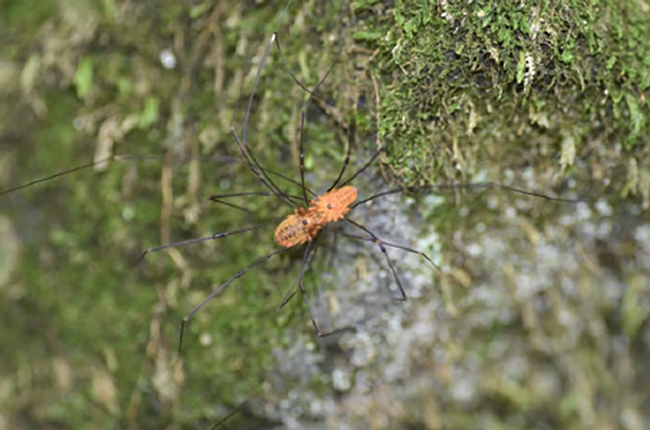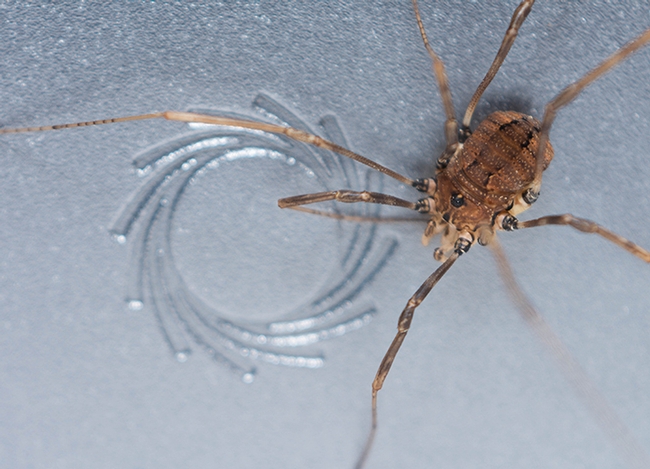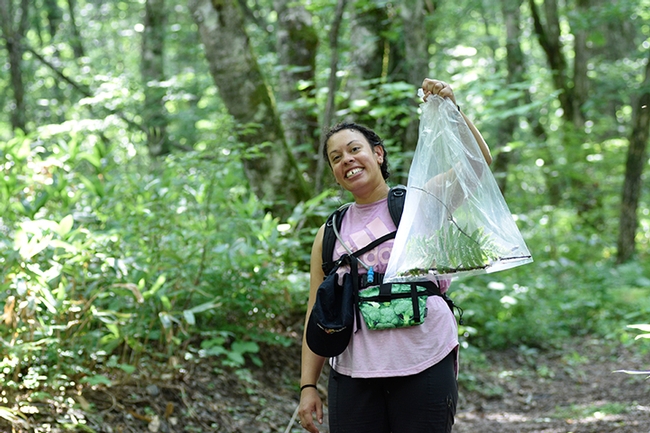- Author: Kathy Keatley Garvey
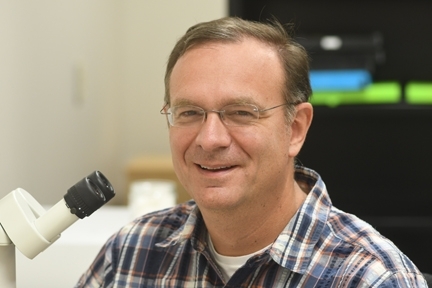
First, the grant:
Jason Bond, professor and the Schlinger Chair in Insect Systematics, UC Davis Department of Entomology and Nematology, has received a 4-year, $1.4 million National Science Foundation grant to study trapdoor spiders in the California Floristic Province.
“The idea is to look at the genomic diversity of trapdoor spider populations across the California landscape and identify new species and hotspots of diversity,” said Bond, principal investigator of the collaborative award, shared with Marshal Hedin, professor of biology at San Diego State University (SDSU).
“From a research perspective, this is pretty exciting but it also includes a really nice educational component working with Fran Keller at Folsom Lake College (a UC Davis alumnus),” Bond said. “We have REU (Research Experiences for Undergraduates) funding for students who will be transferring to UC Davis.”
Also working on the grant is co-PI James Starrett, project scientist in the Bond lab.
Trapdoor spiders construct their burrows with a corklike or wafer trap door made of soil, vegetation and silk. They belong to a number of related families placed in the order Araneae, including Euctenizidae and Halonoproctidae.
The researchers also will be using “crowdsourced” data from iNaturalist, involving public sightings of spiders.
The California Floristic Province is a floristic province with a Mediterranean-type climate on the Pacific Coast. In addition to its remarkable spider diversity, this biodiversity hotspot is known for its giant sequoias and coastal redwoods.
“One of the first products from the project will be the description of a new trapdoor spider genus and species from Moss Landing State Beach,” Bond said. Plans call for the public to suggest candidate names for the new species, with the Bohart Museum of Entomology selecting the winner.
The grant is titled “Collaborative Research: Phylogenomics, Spatial Phylogenetics and Conservation Prioritization in Trapdoor Spiders (and Kin) of the California Floristic Province.”
The abstract: “Using a combination of original fieldwork, newly developed analytical methods for genetically identifying species and their evolutionary and geographic relationships, this research project will focus on trapdoor spiders and their relatives as an exemplary group for biodiversity knowledge and conservation in the California Floristic Province (CA-FP). Long-term surveys will be conducted at multiple geographic locations that include most major CA-FP habitat types. At these sites, the presence of spider species and the numbers of individuals in each will be measured to provide a statistical baseline for future monitoring efforts. New large DNA datasets, based on analysis of thousands of genes, will be generated by analysis of the genomes of these species.”
“New methods will be applied to this data to identify species boundaries, and formal taxonomic descriptions will be made for all new species,” according to the abstract. “The new information about these new species and their genetic relationships will be used to assess patterns of biodiversity in this spider group across the complex geography of the CA-FP. Statistical comparisons of the geographic patterns of spider species distribution will be made to CA-FP plants and vertebrates, and these results will be used to determine whether biodiversity hotspots coincide with federal, state, and locally protected areas.”
“This project will train students and other researchers in several techniques of field biology research, producing and analyzing new data from genomes, using cutting edge methods. This research will encourage participation and train a select group of community college students from underrepresented groups who plan to transfer to Science, Technology, Engineering, and Math (STEM) programs in four-year colleges.”
Bond and colleagues recently published research in the journal Systematic Biology that recognizes eight new spider families—five elevations in rank and three brand new family level rank names, along with one new subfamily. This is in addition to other new families that Bond and Hedin proposed last year. Postdoctoral researcher Vera Opatova of the Bond lab (she recently left for a position in Prague), is the first author on the Systematic Biology paper, "Phylogenetic Systematics and Evolution of the Spider Infraorder Mygalomorphae Using Genomic Scale Data," and Bond is the senior author.
Hedin is the principal investigator of a continuing grant, “Collaborative Research: Phylogenomics, Spatial Phylogenetics and Conservation Prioritization in Trapdoor Spiders (and Kin) of the California Floristic Province,” with co-principal investigator and Jeet Sukemaran, SDSU assistant professor who specializes in computational evolutionary biology.
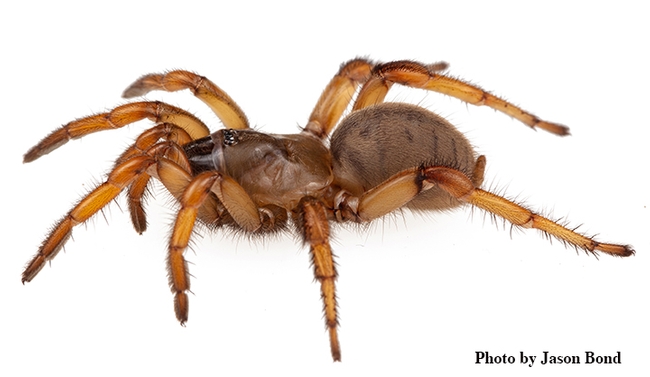
- Author: Kathy Keatley Garvey
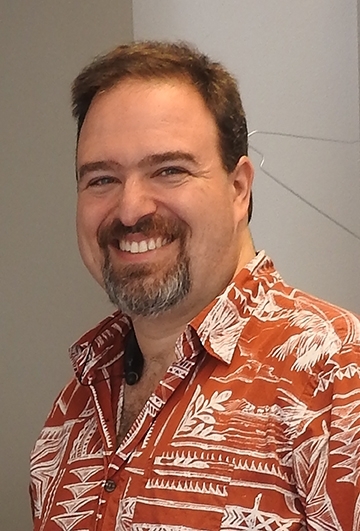
In less than 48 hours, nearly 500,000 people have seen them—but not in his restricted-access lab.
His research subjects are blood-sucking tsetse flies, and PBS featured them in its Deep Look video, “A Tsetse Fly Births One Enormous Milk-Fed Baby,” released Jan. 28, and its accompanying news story.
Infected tsetse flies transmit the parasite that causes human and animal trypanosomiasis, better known as sleeping sickness. “The parasite invades the central nervous system and disrupts the sleep cycle,” says Attardo, a global authority on tsetse flies and an assistant professor in the UC Davis Department of Entomology and Nematology. “If not treated, the disease can result in progressive mental deterioration, coma, systemic organ failure and death.”
“PBS sent out a film crew and we spent about two days filming,” he said. The video also includes footage from Africa that PBS purchased, and video of a tsetse trap that Attardo filmed in the Nguruman Escarpment, Kenya, on the border of Tanzania.
Attardo researches one of 35 tsetse fly species, Glossina morsitans morsitans, which prefers feeding on cattle to humans. Its strong mouthparts can easily puncture the tough cattle hide. In his lab, he feeds them warm cow blood.
Tsetse flies, which resemble house flies, are distinguished from other Diptera by unique adaptations, including lactation and the birthing of live young, Attardo says. Just like mammals, tsetse flies, deliver babies and feed them milk. A female produces more than her body weight in milk.
“We mammals like to think we're pretty special, right?” the video begins. “We don't lay eggs. We feed our babies milk. Well, this very pregnant fly is about to prove us wrong. Yep, this tsetse fly is in labor. And that emerging bundle of joy is her larva. While other insects can lay hundreds of eggs, she grows one baby at a time inside her, just like us. Congratulations!”
The accompanying news story, by Gabriela Quirós, explains that Attardo is “trying to understand in detail the unusual way in which these flies reproduce in order to find new ways to combat the disease, which has a crippling effect on a huge swath of Africa.”
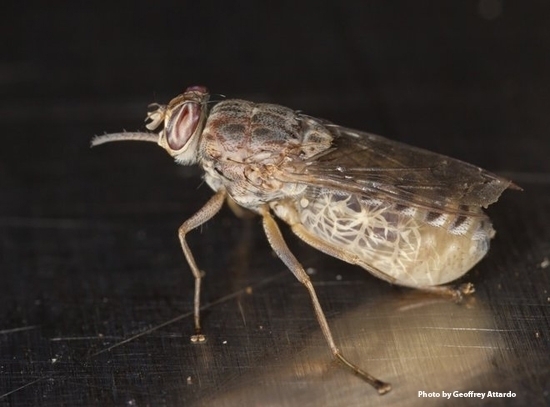
The video shows tsetse flies feeding on cattle, at which point the script reader explains that
“Geoff Attardo…hopes to help. He's trying to stop tsetse flies from making babies in the first place. A female only mates once in her life, enough to make the 10 or so babies she'll have. The male makes sure she doesn't mate again by delivering a substance that makes her lose interest in sex. Scientists are trying to figure out what it is. If they could bottle it and spray it, female tsetse flies may never get busy at all. No more tsetse offspring to worry about.”
Attardo says that tsetse flies deliver only one offspring at a time, as compared to insects that lay hundreds or thousands of eggs at one time. Spraying insects and setting traps can reduce the number who develop the disease, but the insects may become resistant to the chemicals.
Once a female mates, storing the sperm she'll birth in a lifetime, the male delivers “a substance that makes her lose interest in sex,” Quirós wrote. It is that substance or what Attarado calls a “reproductive dead end,” that Attardo wants to replicate, to bottle and spray on the tsetse flies..
“The females definitely are making the decisions,” Attardo told Quirós. “She'll sort of tuck her abdomen underneath her body to prevent him from gaining access, and buzz her wings and knock him off.”
The news story also touched on a bacterium, Wigglesworthia glossinidia, found inside the females that apparently has a role in milk production. “When they kill the bacteria with antibiotics, female flies are no longer able to grow a larva, “Queros wrote. “Young larvae stop growing inside their mothers and are aborted. The results of an experiment by Attardo, which he hasn't published yet, suggest that this happens because flies without the bacteria have trouble making milk.”
Last fall, Attardo published landmark research that provides new insight into the genomics of the blood-sucking tsetse fly. The paper, published Sept. 2 in the journal Genome Biology, compares and analyzes the genomes of six species of tsetse flies and the research could lead to better insights into disease prevention and control.
“It was a behemoth project, spanning six to seven years,” said Attardo. “This project represents the combined efforts of a consortium of 56 researchers throughout the United States, Europe, Africa and China.”
Attardo joined the UC Davis Department of Entomology and Nematology in 2017 after 13 years at the Yale University School of Public Health, New Haven, Conn., first as a postdoctoral fellow from 2004 to 2008, and then as associate research scientist and research scientist.
A native of Poughkeepsie, N.Y., he received his bachelor's degree in entomology from the University of Massachusetts, Amherst, in 1994 and his doctorate in genetics from Michigan State University, East Lansing, in 2004.
(Editor's Note: By popular demand, Attardo plans to again show his virtual reality bugs this year at Briggs Hall during the campuswide UC Davis Picnic Day on Saturday, April 18. "We have some new 3D data showing the internal reproductive organs of the tsetse fly that we plan to adapt to virtual reality.")
Resources:
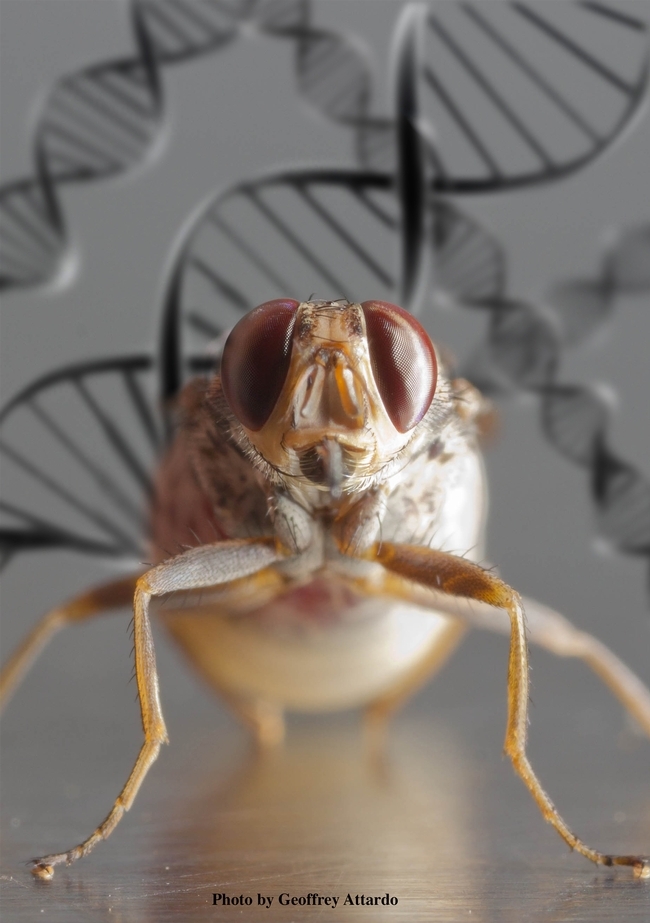
- Author: Kathy Keatley Garvey
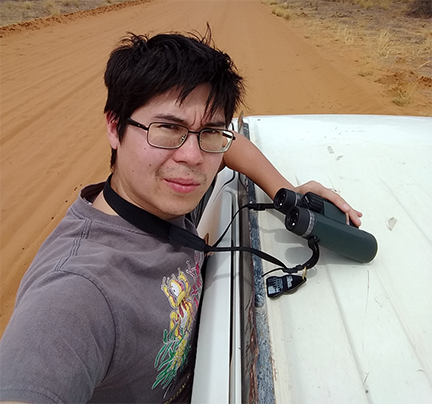
You've probably seen them hovering over flowers, which is why syprhids are commonly called "hover flies" or "flower flies."
Enter Andrew Young.
He's a UC Davis postdoctoral researcher with the Department of California Food and Agriculture (CDFA) and he researches syrphids.
Young, who specializes in Diptera taxonomy and phylogenetics at CDFA, will present a seminar to the UC Davis Department of Entomology and Nematology on "The Natural History of Syrphidae: from Pollinators to Parasitoids" at 4:10 p.m., Wednesday, Feb. 5 in 122 Briggs Hall, off Kleiber Hall Drive.
"Syrphidae (Dlptera) is a species-rich family of true fly, with over 6200 described species worldwide," he says in his abstract. "Often known as flower flies or hover flies, syrphlds are likely the most significant group of pollinators outside of the bees--especially in Arctic climates. While research into their pollination-related behavior is still nascent, other aspects of flower fly biology have been relatively well-studied."
"Adults of many species are well-known for their impressive mimicry of stinging Hymenoptera, and known larvae display a degree of habitat diversity that is unusually broad for a single family of Diptera. Many larvae are predators on soft-bodied insects such as aphids, and therefore, show potential for crop-pest management, while others are aquatic filter-feeders that may have value in waste-management applications." (See UC Integrated Pest Management Program website on syrphids; in their larval stage, they feed on aphids.)
Young says he will give an overview of the current understanding of flower fly phylogeny, followed by an exploration of the varied many adult and larval natural histories known to the group. He will emphasize "many of the little-known larval life histories that are still actively being discovered by dedicated field researchers. I will conclude by briefly discussing some of my past, present and future flower fly research."
Young studied Syrphidae in the lab of Stephen Marshall, professor of entomology at the University of Guelph, Ontario, Canada. Marshall and Young are among the six co-authors of Field Guide to the Flower Flies of Northeastern North America" (Princeton University Press, 2019), a book described as "a groundbreaking guide to flower flies in North America."
From the Princeton University Press website: "Flower flies are, along with bees, our most important pollinators. Found in a varied range of habitats, from backyard gardens to aquatic ecosystems, these flies are often overlooked because many of their species mimic bees or wasps. Despite this, many species are distinctive and even subtly differentiated species can be accurately identified." The guide includes more than 3,000 color photographs and 400 maps, covering all 416 species of flower flies that occur north of Tennessee and east of the Dakotas, including the high Arctic and Greenland. Each species account provides information on size, identification, abundance, and flight time, along with notes on behavior, classification, hybridization, habitats, larvae, and more."
Lynn Kimsey, director of the Bohart Museum of Entomology and professor of entomology at UC Davis, is the seminar host. Community ecologist Rachel Vannette, assistant professor, coordinates the weekly seminars.
Upcoming seminars for the winter quarter (See speaker list) are at 4:10 p.m. on Wednesday in 122 Briggs Hall.
Wednesday, Feb. 12
Kevin Rice, University of Missouri, Columbia
Topic: "Lasers, Drones, and Growth Promoting Fungus: New Technologies for IPM"
Host: Ian Grettenberger, assistant professor
Wednesday, Feb. 19
Mercedes Burns, University of Maryland,>Baltimore County
Topic: (pending) She studies evolutionary ecology of reproductive traits and behaviors, sexual conflict, reproductive polymorphism, arthropod biology
Host: Jason Bond, professor and Schlinger Chair in Insect Systematics
Wednesday, Feb. 26:
Faculty Flash Talks (featuring faculty members Rachel Vannette, Ian Grettenberger, Shahid Siddique, Geoffrey Attardo, Jason Bond)
Wednesday, March 4
Brendon Boudinot, doctoral candidate, Phil Ward lab, exit seminar
Topic: "Morphology and Evolution of the Insects, and the Ancestors of the Ants"
Host: Phil Ward, professor
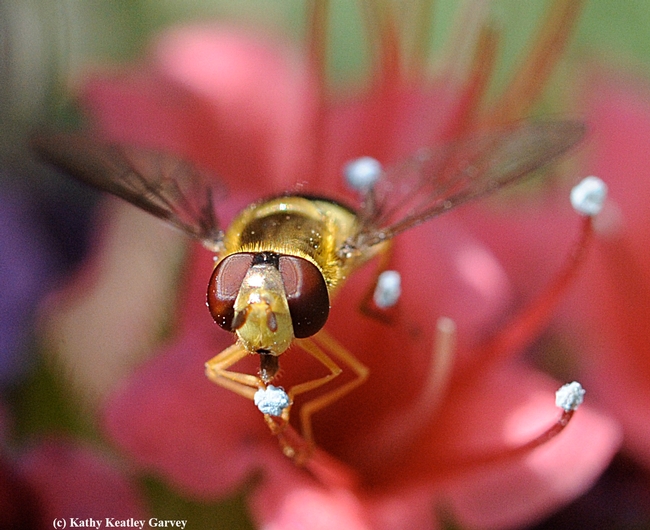
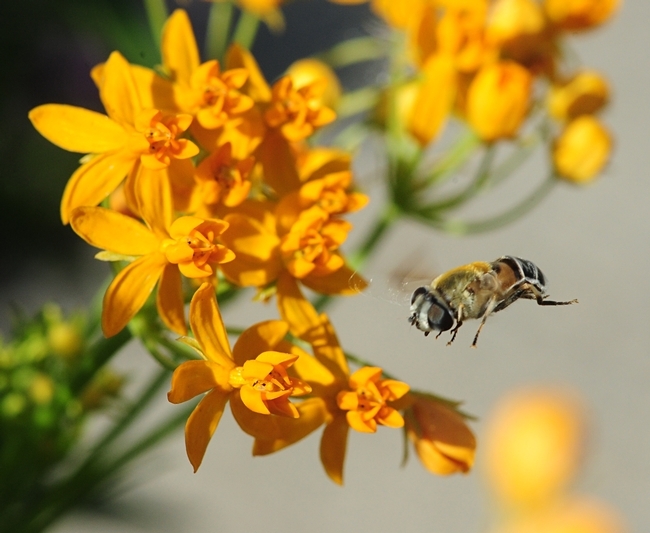
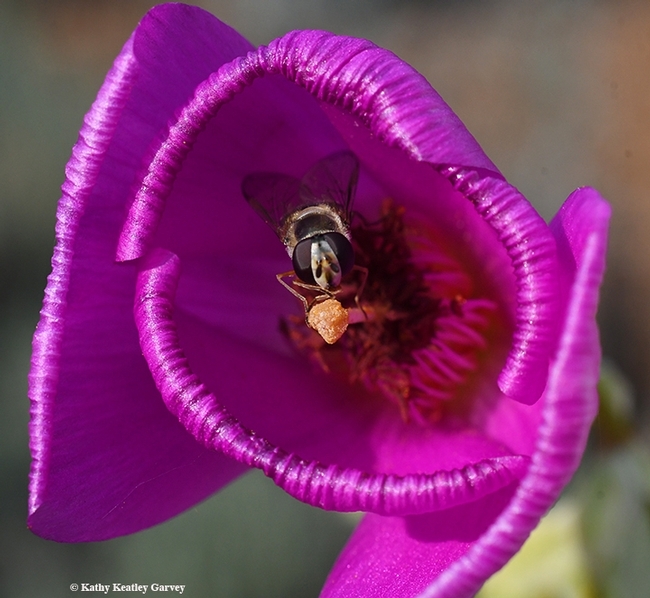
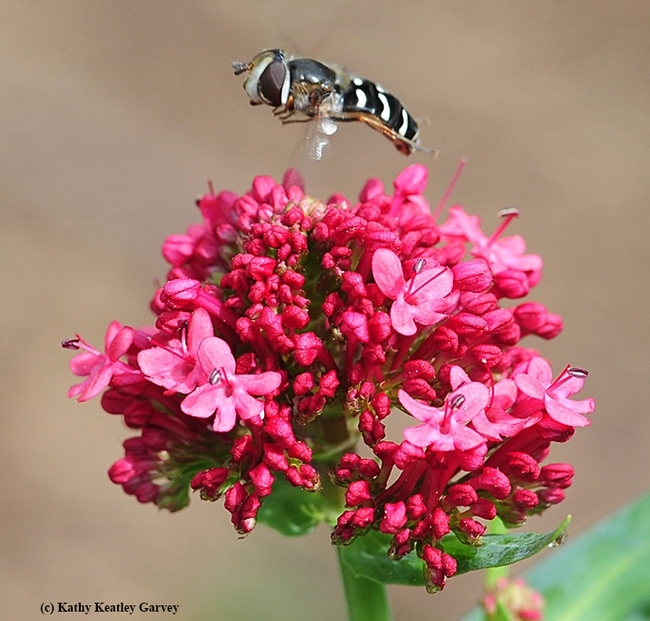
- Author: Kathy Keatley Garvey
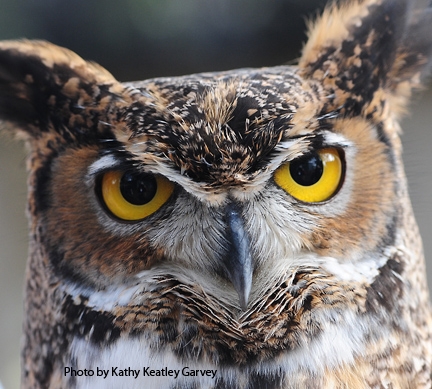
"Owl that" at more at the ninth annual UC Davis Biodiversity Museum Day on Saturday, Feb. 15 when 13 museums and collections showcase their projects.
The event, to take place from 9 a.m. to 4 p.m., is free and family friendly. All 13 sites are within walking distance except for the Häagen-Dazs Honey Bee Haven on Bee Biology Road and the Raptor Center on Old Davis Road.
The science-based event, always held the Saturday of Presidents' Day weekend, features the diversity of life. It is billed as a “free, educational event for the community where visitors get to meet and talk with UC Davis scientists from undergraduate students to staff to emeritus professors and see amazing objects and organisms from the world around us,” according to Biodiversity Museum Day coordinator Tabatha Yang, education and outreach coordinator for the Bohart Museum of Entomology. The schedule is online.
Last year's event drew more than 4000 visitors. Schedules vary from collection to collection.

- The Botanical Conservatory, the Greenhouses along Kleiber Hall Drive, will be open from 9 a.m. to 4 p.m.
The following five will be open from 9 a.m. to 1 p.m.:
- Arboretum and Public Garden, Shields Oak Grove, alongside the Vet School, Garrod Drive on campus
- Bohart Museum of Entomology, Room 1124 and Main Hall of the Academic Surge Building, Crocker Lane
- California Raptor Center, 340 Equine Lane, off Old Davis Road
- Museum of Wildlife and Fish Biology, Room 1394 and Mail Hall, Academic Surge Building, Crocker Lane
- Paleontology Collection, Earth and Physical Sciences Building, 434 LaRue Road
Two collections will be open from 10 a.m. to 2 p.m.:
- Phaff Yeast Culture Collection, Robert Mondavi Institute of Wine and Food Science, 392 Old Davis Road, on campus
- Viticulture and Enology Culture Collection, Robert Mondavi Institute of Wine and Food Science, 392 Old Davis Road, on campus
These four will be open from noon to 4 p.m.:
- Anthropology Museum, 328 Young Hall and grounds
- Center for Plant Diversity, Sciences Laboratory Building, off Kleiber Hall Drive
- Häagen-Dazs Honey Bee Haven, Bee Biology Road, off Hopkins Road (take West Hutchison Drive to Hopkins)
- Nematode Collection, Sciences Laboratory Building, off Kleiber Hall Drive
- Marine Invertebrate Collection, Sciences Laboratory Building, off Kleiber Hall Drive
New this year will be public talks from noon to 1 p.m. in 194 Young Hall. Speaking will be butterfly expert Art Shapiro, distinguished professor of evolution and ecology; Gabriella Nevitt, professor, Department of Neurobiology, Physiology and Behavior, College of Biological Sciences; and Melanie Truan, staff research associate, Museum of Wildlife and Fish Biology and former postdoctoral researcher at UC Davis. Titles will be announced.
All participating museums and collections have active education and outreach programs, Yang said, but the collections are not always accessible to the public. Maps, signs and guides will be available at all the collections, and also online at http://biodiversitymuseumday.edu, and on social media, including Facebook and Twitter, @BioDivDay.
Capsule information on each:
Arboretum and Public Garden, 9 a.m. to 1 p.m.
Melissa Cruz Hernandez, outreach and leadership program manager, Arboretum and Public Garden, notes that the Arboretum activities will all be at the Shields Oak Grove, alongside the School of Veterinary Medicine, Garrod Drive. This is a change from last year. The Arboretum Ambassadors are planning fun-filled oak tree conservation activities the whole family will enjoy. “Learn about the many contributions oaks make to sustaining habitat biodiversity, what UC Davis and the Arboretum and Public Garden are doing to protect the trees, and win prizes for participating in the games at the Shields Oak Grove!”
Hernandez announced the following Arboretum activities:
- GATEways Outreach Ecological group: Learn what it is like to live as an oak tree through a life size board game and win prizes! Explore the ecological impacts oaks have in our community and discover about how the changing climate is impacting this important species.
- GATEways Outreach Humanities group: Did you know the US Constitution was signed in oak gall ink? Join us and try out oak gall ink for yourself, and engage in mindfulness activities.
- Museum Education: Take a self-guide tour through our iconic oak grove and learn about the unique characteristics of 12 of our favorite trees.
- Emily Griswold Tour: Join oak expert and Director of GATEways Horticulture, Emily Griswold, on an engaging tour of the oak grove. Uncover behind the scenes information about the grove and get your quercus questions answered.
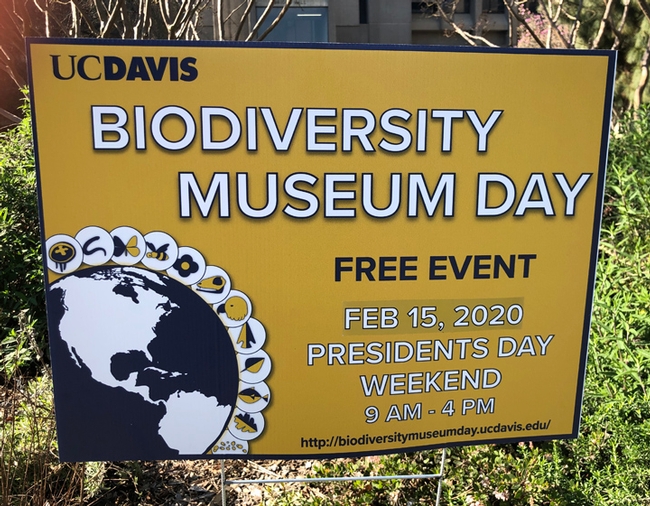
The Bohart Museum of Entomology, located in Room 1124 of the Academic Surge Building on Crocker Lane, is the home of a global collection of nearly 8 million insect specimens. Insect scientists will meet with the public to help them explore insects and spiders (arachnids). Highlights will include the 500,000-specimen butterfly/moth collection, curated by entomologist Jeff Smith. The Bohart maintains a live “petting zoo,” comprised of Madagascar hissing cockroaches, walking sticks and tarantulas. Also, the UC Davis Library set up a Mary Foley Benson exhibit in the Academic Surge hallway. It will be up ponly for the month of February. "The library, is, of course full of special collections including very important research materials on bees and on nematodes," noted Tabatha Yang, the Bohart education and outreach coordinator.
California Raptor Center, 9 a.m. to 1 p.m.
Visitors to the The California Raptor Center, located at 1340 Equine Lane, Davis, just off Old Davis Road, will see a living collection of non-releasable raptors. The center's educational ambassador birds will be out "on the glove," so visitors can get a close view of the birds of prey, and talk to the volunteers. Julie Cotton, volunteer and outreach coordinator, said visitors will see "on the glove" Swainson's hawks, a white-tailed kite, barn owl, great-horned owls and a eregrine falcon. Viewable in their exhibits will be golden eagles, American kestrels, turkey vultures, prairie falcon and Western screech owls.
Museum of Wildlife and Fish Biology, 9 a.m. to 1 p.m
The Museum of Wildlife and Fish Biology, located in Room 1394 of the Academic Surge Building, Crocker Lane (off LaRue Road) will feature an action packed morning with displays highlighting carnivores, bats, reptiles and fish, said director Andrew Engilis Jr. Visitors will see specimen preparation demonstrations. Also planned is a kids' craft table.
Paleontology Collection, 9 a.m. to 1 p.m.
Visitors at the Paleontology Collection, located in the Earth and Physical Sciences Building, 434 LaRue Road, can view fossil specimens dating from as old as 550 million years ago to more recent animal skeletons. Paleontology graduate students in invertebrate and vertebrate paleontology will answer questions and provide interesting factoids.
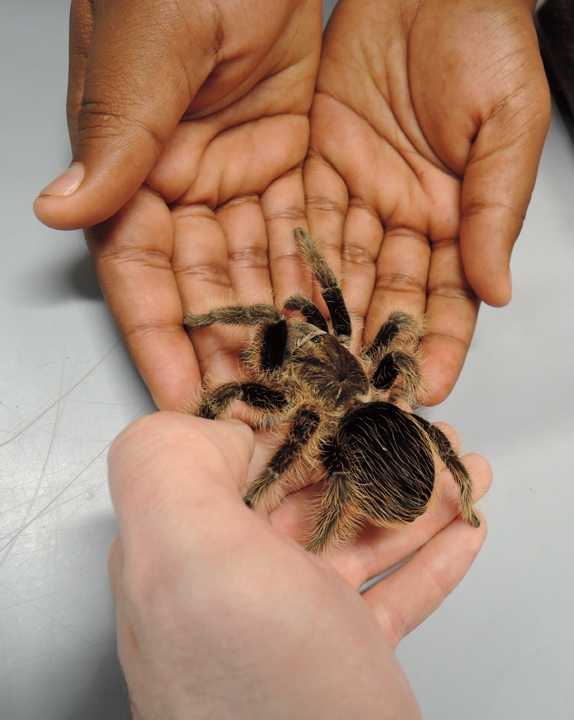
The Phaff Yeast Culture Collection in the Department of Food Science, and the Wine Yeast and Bacteria collection in the Department of Viticulture and Enology, are jointly hosting exhibits and tours. They are located at the Robert Mondavi Institute Teaching Winery and Brewery Building, 392 Old Davis Road, on campus. Visitors to the yeast collection exhibits can taste kombucha and Vegemite, smell lots of different species of yeast, look at yeast and bacteria cells under the microscope, learn about the history of yeast research at UC Davis, and hear about the latest discoveries coming out of the UC Davis yeast collections, says Kyria Boundy-Mills, curator of the Phaff Yeast Culture Collection, Food Science and Technology.
Anthropology Museum, noon to 4 p.m.
Visitors to the Department of Anthropology Museum, located in 328 Young Hall, will see collections of archaeological, ethnographic, biological and archival materials. They will "experience our cultural diversity through art pieces from around the world, our complex evolutionary history through primate skeletons and fossil hominin casts, or how archaeologists at UC Davis work across the globe to understand past cultural diversity through the artifacts people leave behind," said Professor Christyann Darwent of the Department of Anthropology. "There will also be an opportunity for visitors to learn to make tools from obsidian stone and to throw a spear with an atlatl."
The Botanical Conservatory, 9 a.m. to 4 p.m.
"We again expect our cacao tree to be loaded with ripe fruit for display amongst the plethora of plant we'll be displaying!" says collections manager Ernesto Sandoval. "We'll also be showcasing our very well established pond that made a splash last year and newly added small epiphyte tree along with three towering Titan Arums in leaf! if the outdoor weather is good, Visitors will be encouraged to take a walk over to the nearby Joe and Emma Lin Biological Orchard and Gardens and bask in the biodiversity of these sizable plots of Biodiversity and the neatly pruned fruit tree orchard." The Botanical Conservatory is located on Kleiber Hall Drive.
Center for Plant Diversity Herbarium, noon to 4 p.m.
Visitors to the Center for Plant Diversity Herbarium, located in Room 1026 of the Sciences Laboratory Building, central campus (off Kleiber Hall Drive), can tour the collection area, see plant pressing and mounting demonstrations, “pet our plant zoo” (a table showcasing the diversity of plants, including mosses, pine cones, ferns and flowering plants); look and plants under a microscope, and view oak exhibit. The children's activity? Making herbarium specimens, says curator Ellen Dean.
Häagen-Dazs Honey Bee Haven, noon to 4 p.m.
Visitors to the Häagen-Dazs Honey Bee Haven, a half-acre bee demonstration garden located next to the Harry H. Laidlaw Jr. Honey Bee Research Facility, Bee Biology Road, can learn about bees and see the plants they frequent, said manager Christine Casey. Guests will learn how to identify bees. They can also use a bee vacuum to catch, observe and release bees. A six-foot long sculpture of a worker bee by artist Donna Billick of Davis anchors the haven.
Nematode Collection, noon to 4 p.m.
The nematode collection will open from noon to 4 p.m. in the Science Laboratory Building, off Kleiber Hall Drive. It will feature both live and slide-mounted nematodes, as well as jars of larger parasites. Nematodes, also called worms, are described as “elongated cylindrical worms parasitic in animals or plants or free-living in soil or water. They exist in almost every known environment.”
Marine Invertebrate Collection, noon to 4 p.m.
The Marine Invertebrate Collection in the Science Laboratory Building, off Kleiber Hall Drive, will have touch tanks, preserved specimens, and some displays showing aspects of marine ecology and evolution. There will also be a seashell activity for kids, said Ivana Li. "In our touch tanks, we'll likely have sea stars and sea urchins. We are showing all the different geographical locations from which they were collected. This means that people can match up where specimens like our slipper lobster or salp came from. Other displays that we will have are on how to distinguish true crabs from other animals, and a display on seaweed ecology."
The sponsors made it all possible to have this event free to the public, Yang said. Ink Monkey is providing 300 t-shirts for the volunteers, and Marrone Bio Innovations and Novozymes are also major supporters. Other supporters include the UC Davis Honey and Pollination Center, UC Davis Library, White Labs Inc., Margaret Berendsen, Fletchers Real Estate, Peter Lash and Dan Potter.
Further information is available on the UC Davis Biodiversity Museum Day website.
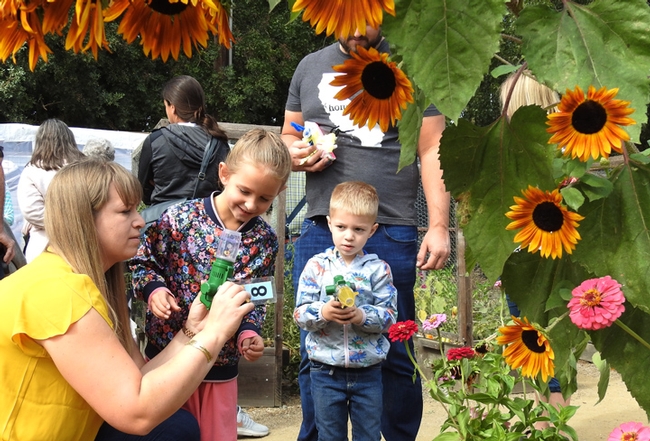
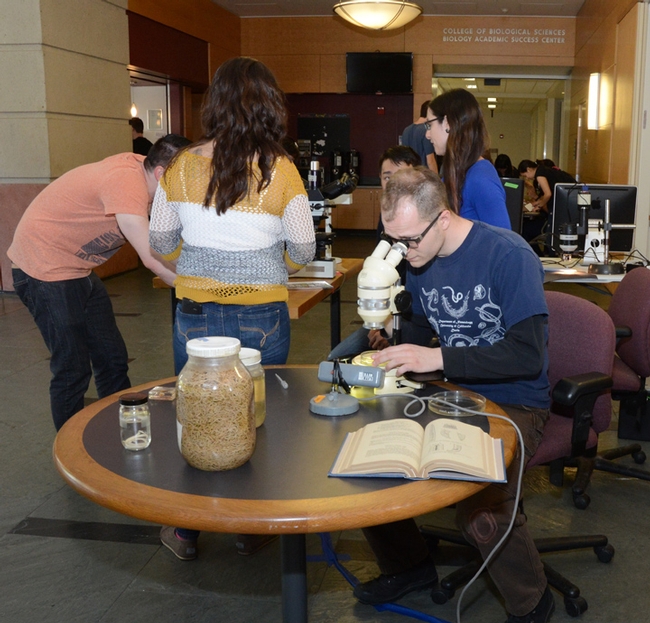
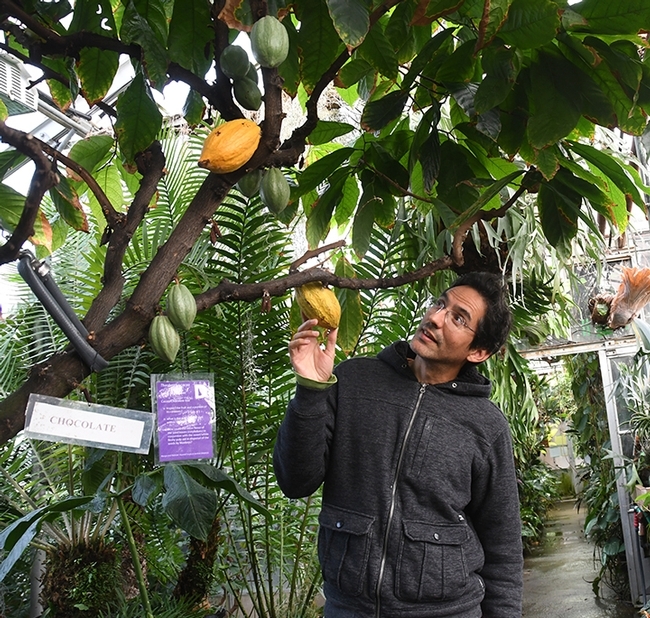
- Author: Kathy Keatley Garvey
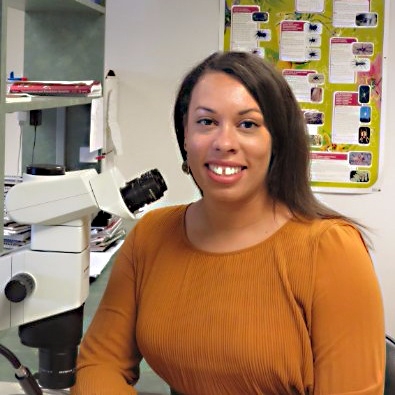
Burns, an assistant professor of biological sciences, will discuss "Reproductive Diversity and Sexual Conflict: Opilionid (Daddy-LongLegs or Harvestmen) Mating from the Female Perspective," when the UC Davis Department of Entomology and Nematology hosts her seminar at 4:10 p.m., Wednesday, Feb. 19 in Room 122 of Briggs Hall.
Harvesters or "daddy-longlegs" belong to the "ancient arachnid order Opiliones, which includes spiders, scorpions, mites and ticks," she says. "Although harvesters are often mistaken for spiders, they are very different! Harvesters (Opiliones) and spiders (Araneae) form separate branches in the arachnid tree of life. Harvesters do not have fangs, nor do they make venom or silk!"
"Sexual reproduction may pose myriad short-term costs to individuals through sexual conflict or the disruption of beneficial allelic combinations," Burns writes in her abstract. "Despite these costs, sexual reproduction is nearly ubiquitous in animal systems. To better understand the factors responsible for maintaining sex, study of alternative reproductive systems is necessary. We use daddy-longlegs or harvestmen (Arachnida: Opiliones) to understand how sexual conflict and post-copulatory mechanisms drive reproductive trait evolution. I will describe recent projects in my laboratory focusing on facultative asexuality and female reproductive morphological diversity in two groups of temperate harvestmen species from the United States and Japan."
The Burns Lab, she says, "studies the evolutionary and ecological mechanisms that contribute to sexual conflict in animal mating systems. We are interested in how demography, environmental factors, and evolutionary selective pressures influence reproductive morphology, genitalic function, mating behaviors, and holistic mating systems, especially in the leiobunine opilionids — a.k.a. harvesters, harvestpeople or 'daddy-long-legs.' We combine macroevolutionary and population-level approaches to understanding the biodiversity of arthropods, incorporating next-generation genomic sequencing, functional morphology, bioinformatics, and cytological methods into our toolkit. Current projects are focused on species groups in the United States and Japan with intriguing reproductive traits: parthenogenesis, sex ratio bias, reproductive armaments, and potential reproductive endosymbionts."
Burns holds a bachelor's degree in biology, awarded in 2006 from Macalester College, St. Paul, Minn., and a doctorate in behavior, ecology, evolution and systematics, awarded in 2014 from the University of Maryland, College Park. She accepted her current position in the fall of 2017 after completing a National Science Foundation postdoctoral fellowship in biology. She studied Japanese leiobunine harvestmen in Japan.
Read her research on Population Genomics and Geographical Parthenogenesis in Japanese Harvestmen (Opiliones, Sclerosomatidae), published in 2017 in the journal Ecology and Evolution.
